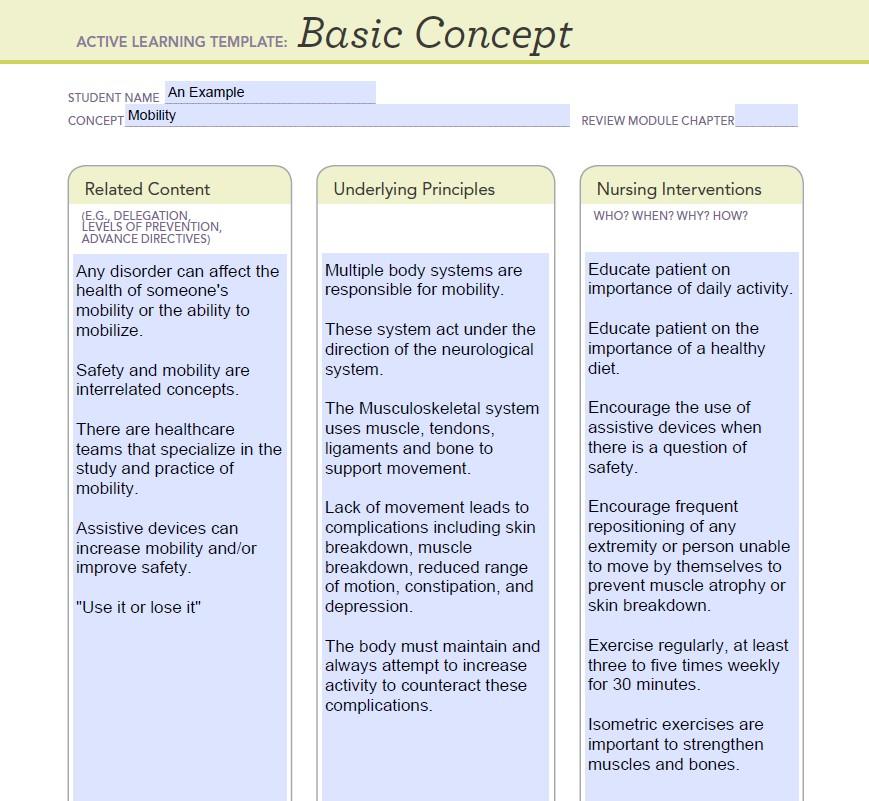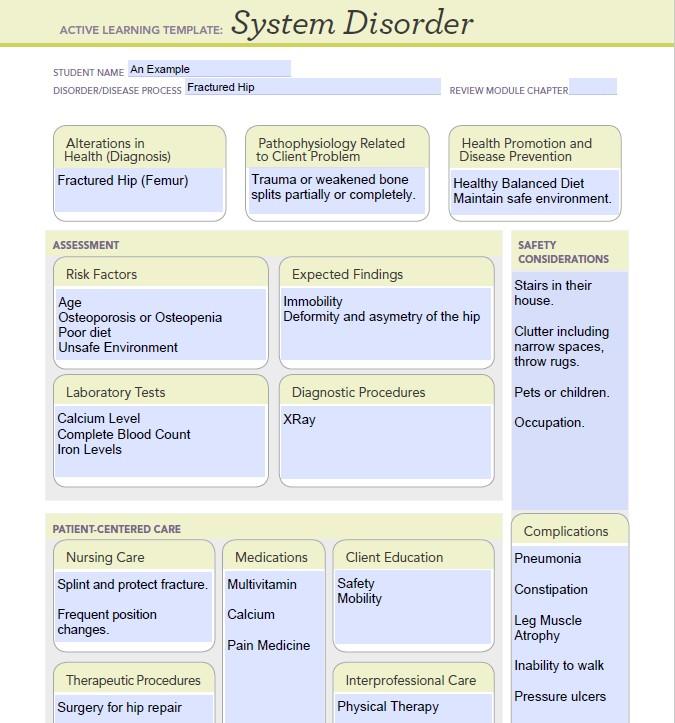NR283 Pathophysiology
Concept Process Assignment Guidelines
Purpose: To integrate and build on basic concepts in support of critical thinking.
Courseoutcomes:This assignment enables the student to meet the following course outcomes.
CO 1: Correlate lifestyle, environmental, and other influences with changes in levels of wellness. (POs 1 and 7)
CO 2: Explain the pathophysiologic processes of select health conditions. (PO 1)
CO 3: Predict clinical manifestations and complications for select disease processes. (POs 1 and 8)
Duedate:Your faculty member will inform you when this assignment is due. The Late Assignment Policy applies to this assignment.
Totalpointspossible:50 points
Preparingtheassignment
- Select a pathophysiology concept (i.e., infection, mobility, perfusion, tissue integrity, cognition, intracranial regulation, hormonal regulation, glucose regulation, fluid and electrolytes, acid-base balance, cellular regulation, nutrition, gas exchange, pain, immunity, inflammation, elimination, and thermoregulation) for which you have not previously completed an active learning template (ALT). Some examples include but are not limited to
- Complete the three areas of the template to describe the pathophysiologic changes that occur within the body and what care the nurse may provide for clients experiencing the changes.
- Select a disease process (i.e., myocardial infarction, cerebrovascular accident, seizure, small bowel obstruction) from the current organ system you are studying, for which you have not previously completed an ALT.
- Complete the top three boxes, the Assessment and Safety Concerns area of the form.
- Be prepared to submit, present and/or teach this concept to others, as directed by your instructor.
- In addition, complete as much of the Patient Centered Care area as you are able based on your own research and/or collaboration with your peers or faculty.
- Create a 1-page analysis describing how the selected Basic Concept ALT relates to the selected Systems Disorder ALT.
- Be prepared to present and/or submit your paper, as directed by your instructor.
For writing assistance, visit the Writing Center.
Please note that your instructor may provide you with additional assessments in any form to determine that you fully understand the concepts learned in the review module.
Thefollowing provides anexample of the Basic Concept ALT to helpclarifytheassignmentguidelines.
NOT FOR STUDENT SUBMISSION

Thefollowing provides anexample of the System Disorder ALT to helpclarifytheassignmentguidelines.
NOT FOR STUDENT SUBMISSION

Thefollowing provides anexample of the 1-page Analysisto helpclarifytheassignmentguidelines.
NOT FOR STUDENT SUBMISSION
Since the largest group to experience hip fractures are older adults, the normal changes that occur with aging place them at higher risk for complications of immobility and surgical repair of the fracture (for example: decreased muscle mass, decreased bone density, suppressed immune response, and loss of muscle strength and flexibility).
Immobility after a hip fracture (and surgical repair of the break) contributes to the following undesirable changes within the body.
- Deep vein thrombosis (DVT) occurs when blood pools in the lower extremity veins, which increases the risk of pulmonary embolism and compromised circulation and oxygenation.
- Muscle atrophy contributes to orthostatic hypotension when the smooth muscles of the venous system fail to contract when the client changes from a supine to an upright position.
- Loss of appetite due to inactivity, depression, boredom, or pain can contribute to weight loss and malnutrition impacting muscle mass and delaying healing.
- Use of an indwelling urinary catheter increases the risk for urinary tract infection.
- Calcium loss from long bones may lead to renal calculi and osteoporosis.
- Pressure and moisture to the skin increases the risk of pressure ulcers.
- If client unable to reposition themselves in bed, skin can break down increasing the chance for infection.
- Social isolation increases the risk of delirium and disorientation.
- When supine, the weight of the chest wall limits lung expansion and contributes to atelectasis.
- Blood redistribution and fluid shifts increase the risk for pulmonary edema.
- Pooling of secretions increases the risk for pneumonia and decreased gas exchange.
- Decreased weight bearing contributes to hormone imbalances.
Considering the concept of mobility with the systems disorder of a hip fracture, it is evident that the older adult is most at risk for not only experiencing a hip fracture but having one or more complications of immobility due to the injury, as well.
Patient-focused care should address pain management (pharmacologic and non-pharmacologic), promoting optimal respiratory status, and early movement with the help of physical therapy. As always, client safety should be incorporated into all care.
GradingRubric: Criteria are met when the student’s application of knowledge demonstrates achievement of the outcomes for this assignment.
WE HAVE DONE THIS QUESTION BEFORE, WE CAN ALSO DO IT FOR YOU
GET SOLUTION FOR THIS ASSIGNMENT, Get Impressive Scores in Your Class
CLICK HERE TO MAKE YOUR ORDER on Correlate lifestyle, environmental, and other influences with changes in levels of wellness
TO BE RE-WRITTEN FROM THE SCRATCH
| Assignment Section andRequiredCriteria (Pointspossible/%oftotalpointsavailable) | Highest Level ofPerformance | High Level ofPerformance | SatisfactoryLevelofPerformance | Unsatisfactory Level of Performance | Section not Presented in Assignment |
| BasicConceptActiveLearningTemplate (15 points/30%) | 15points | 13 points | 12points | 6 points | 0points |
| Requiredcriteria Complete the entire template. Student name Concept Related content Underlying principles Nursing interventions Be ready to submit, present, and/or teach this concept to others. | 5 of 5 required criteria are included. | 4 of 5 required criteria are included. | 3 of 5 required criteria are included. | 1-2 of 5 required criteria are included. | 0 of 5 required criteria are included. |
| SystemsDisorderActiveLearningTemplate (15 points/30%) | 15 points | 13 points | 12points | 6 points | 0 points |
| Requiredcriteria Complete these sections Student name Disorder/Disease process Alterations in health (diagnosis) Pathophysiology Related to client problem Health promotion and disease prevention Risk factors Expected findings Laboratory tests Diagnostic procedures Safety considerations | 9 of 9 required criteria are included. | 8 of 9 required criteria are included. | 7 of 9 required criteria are included. | 1-4 of 9 required criteria are included. | 0 of 9 required criteria are included |